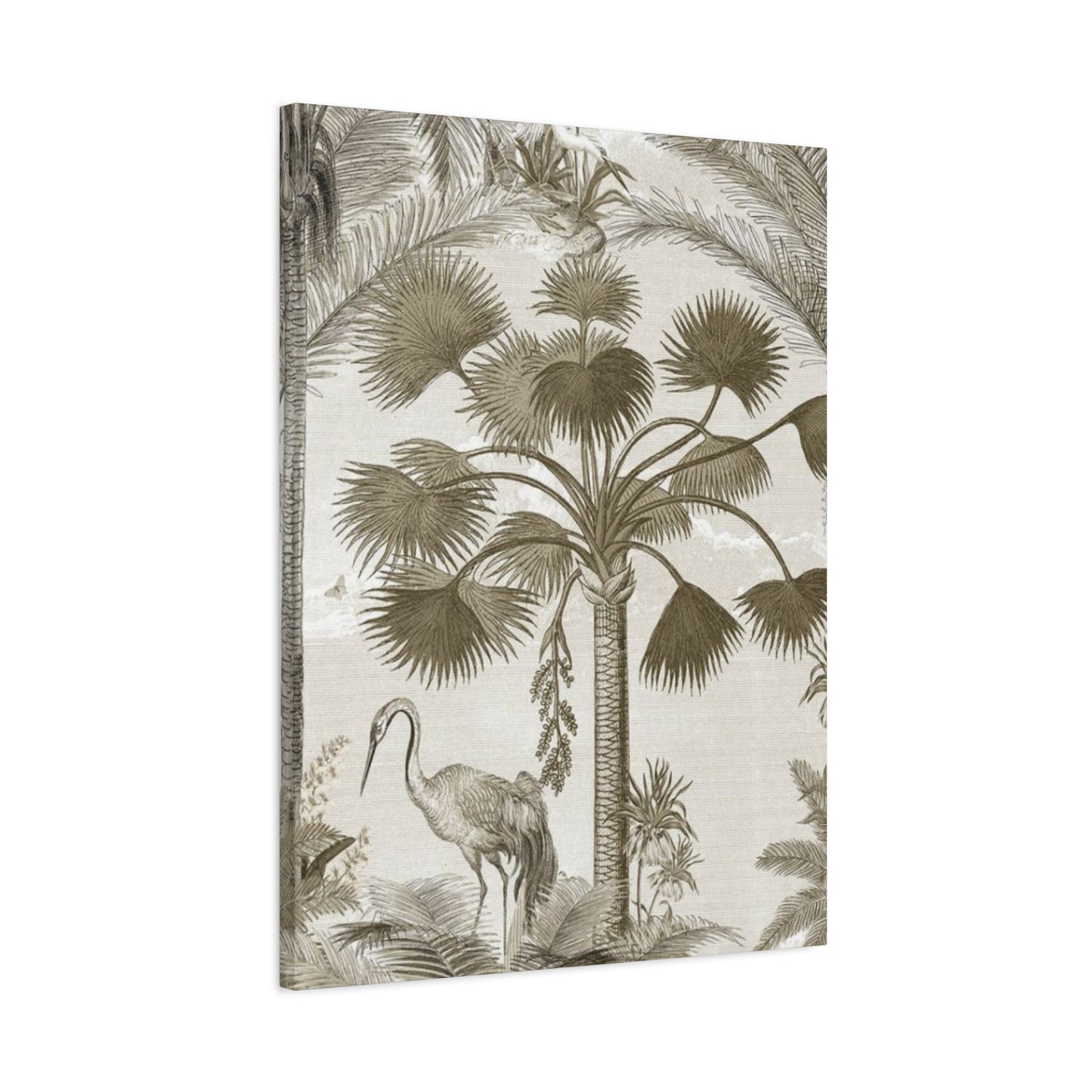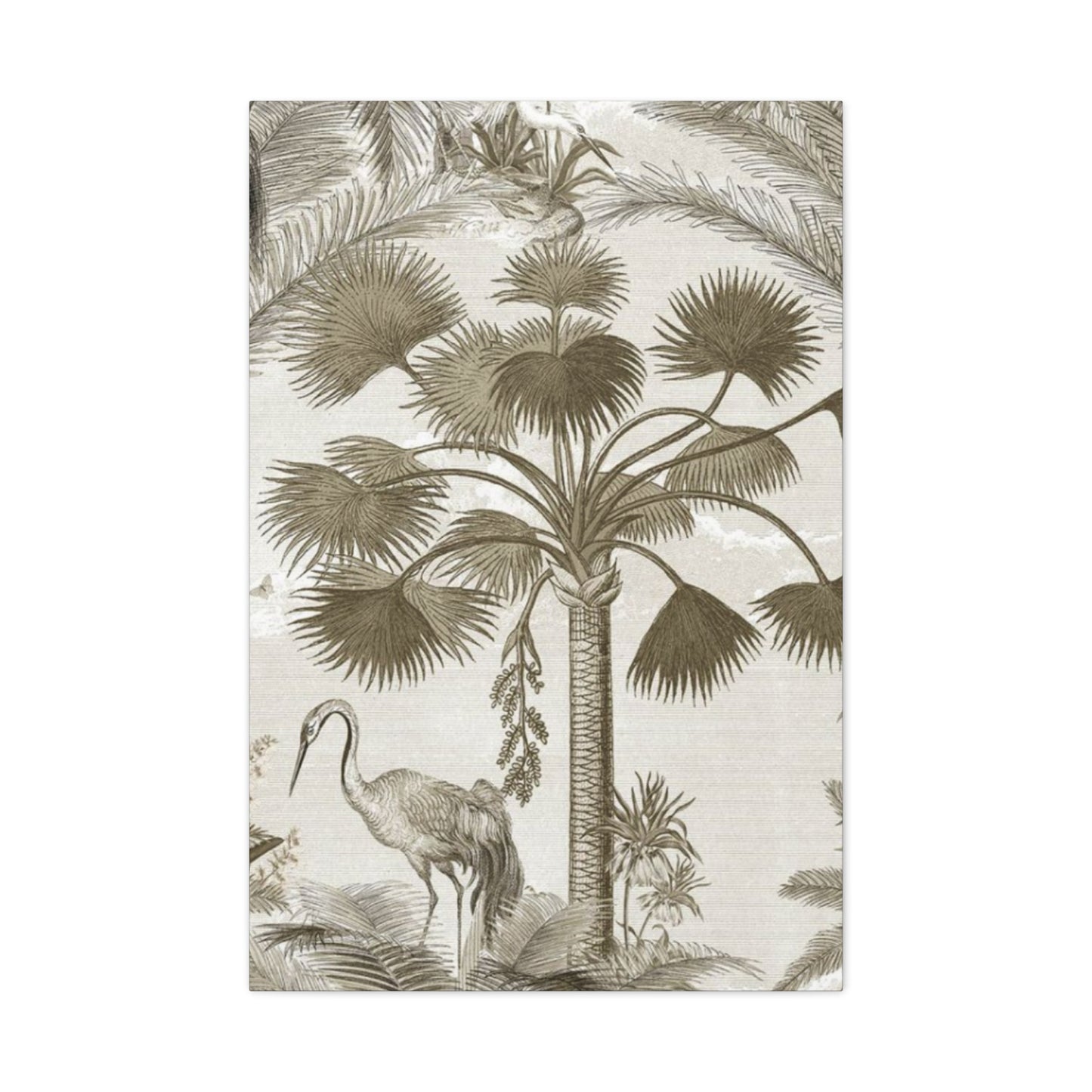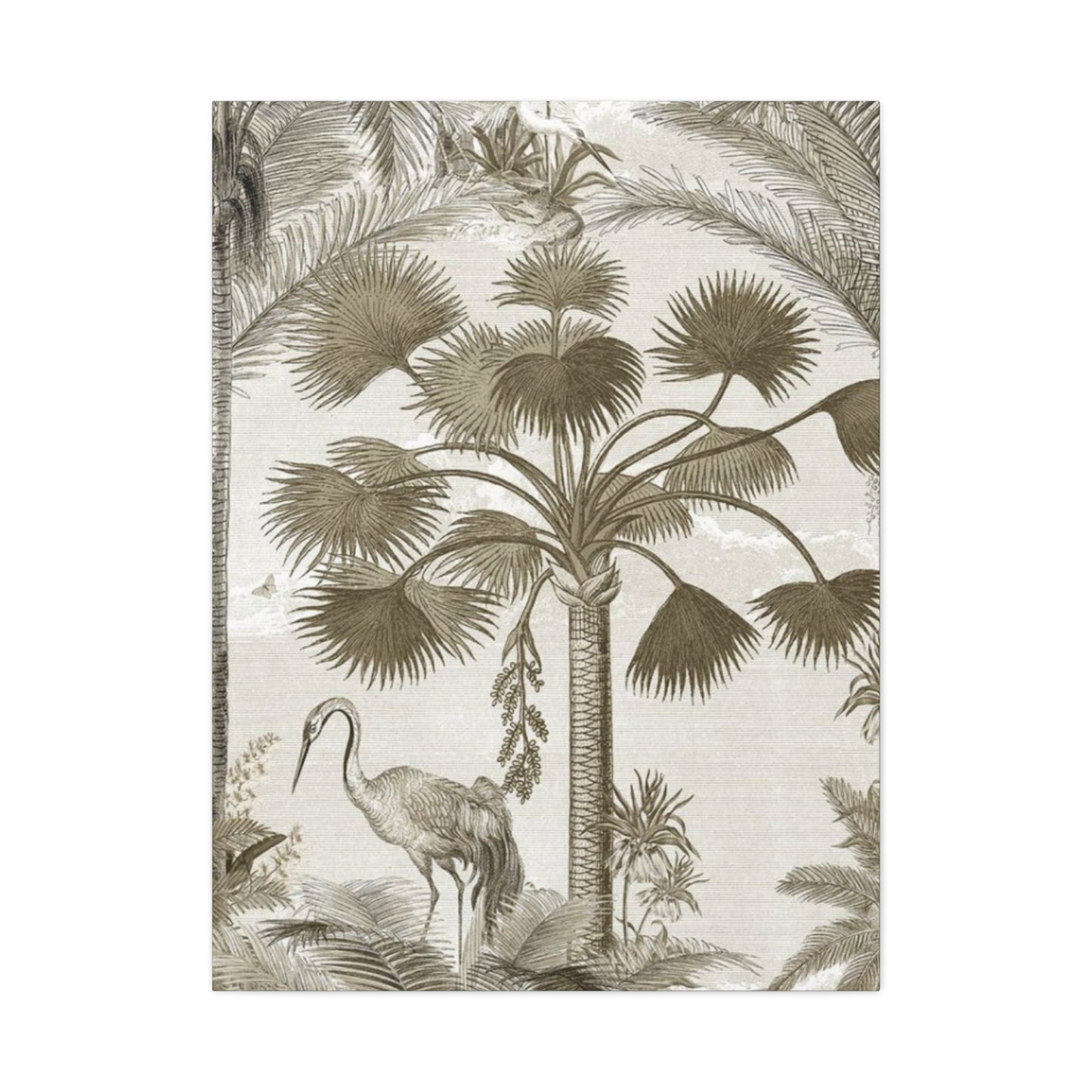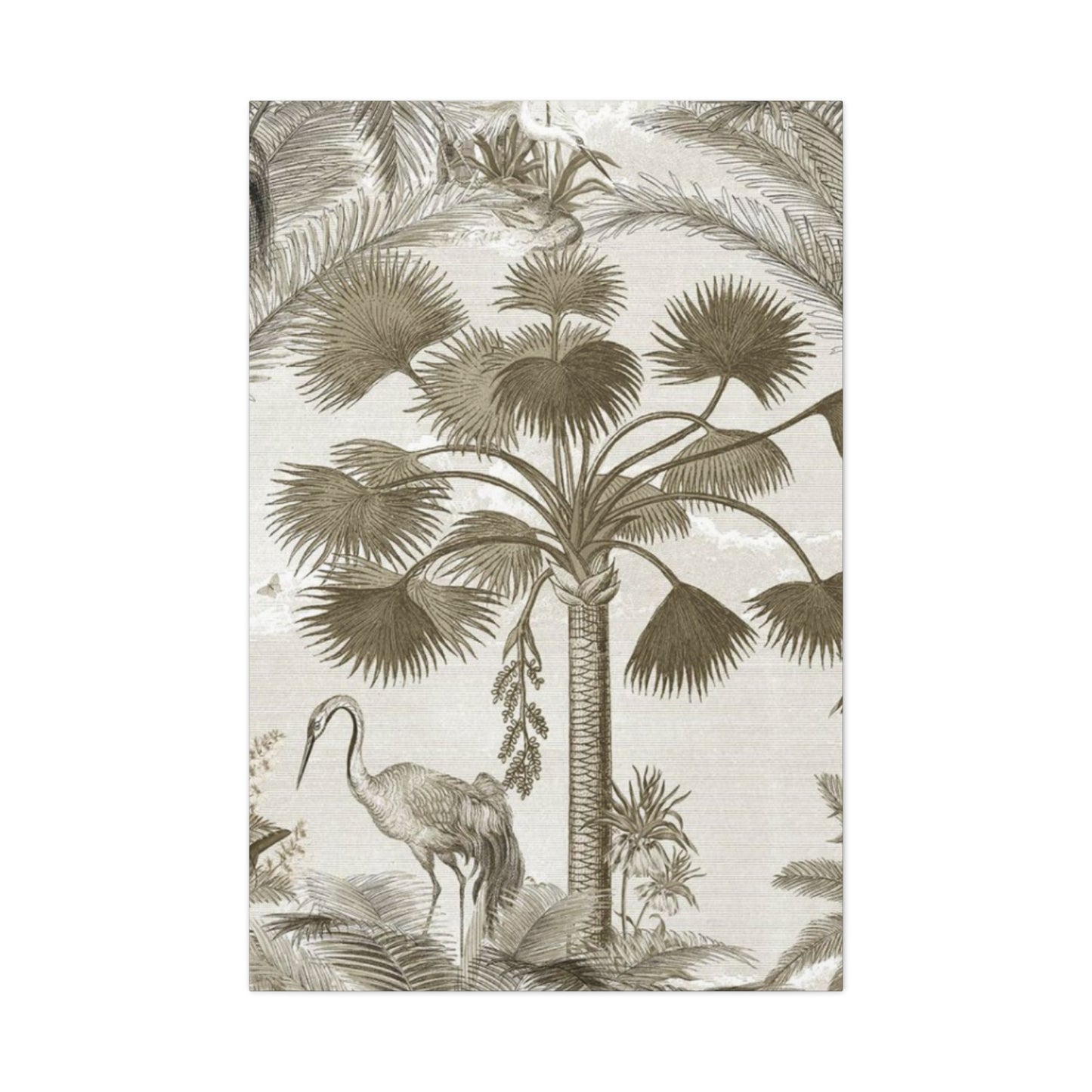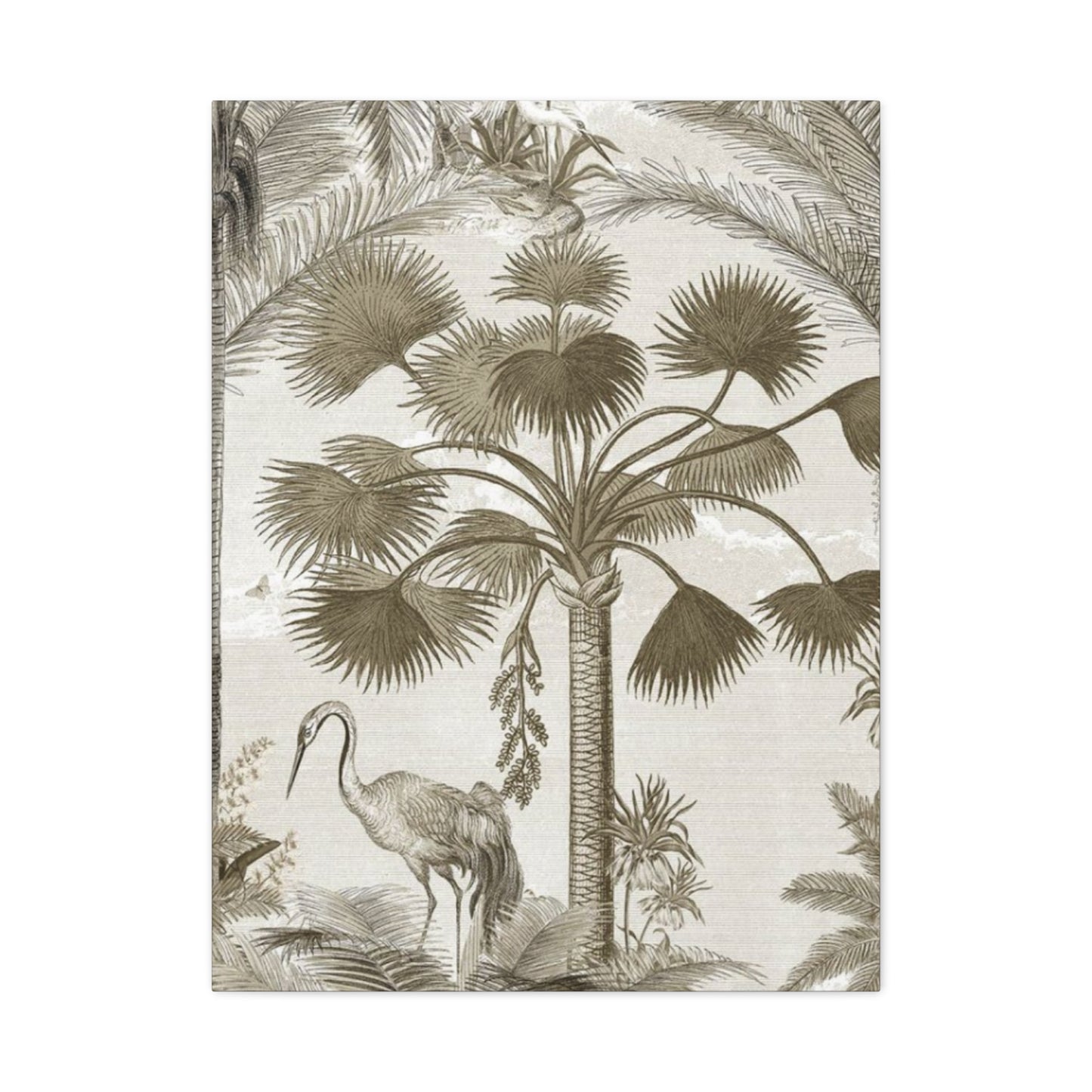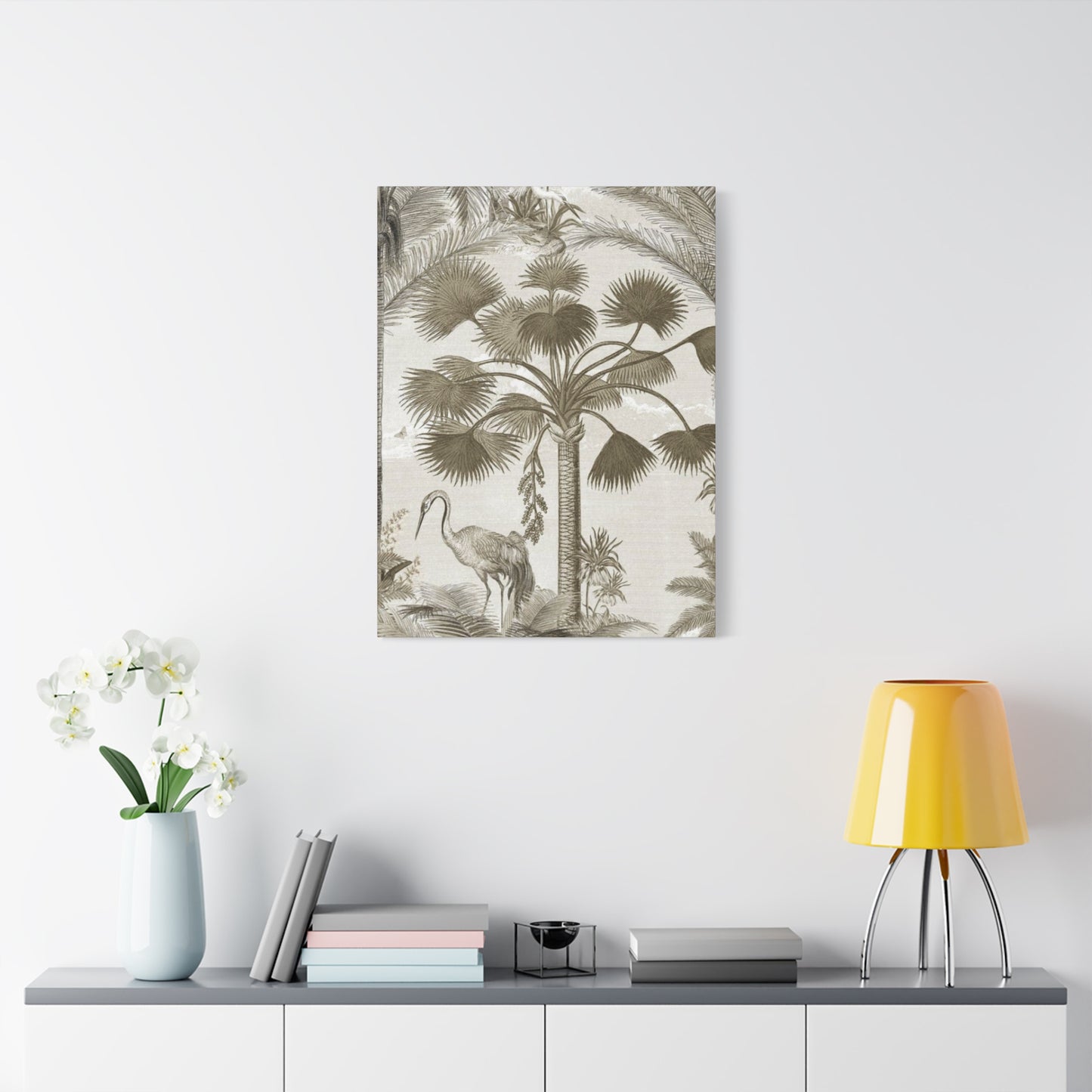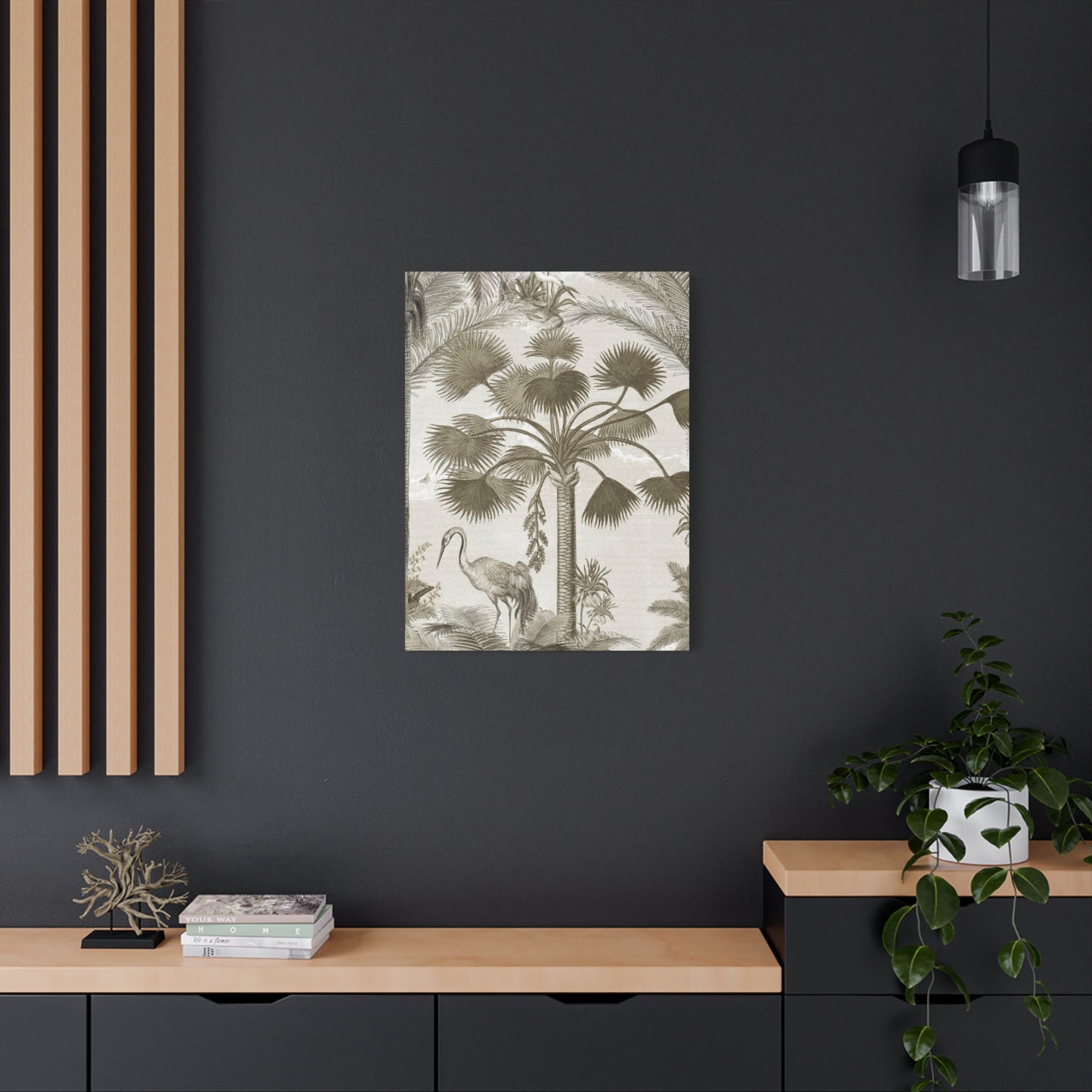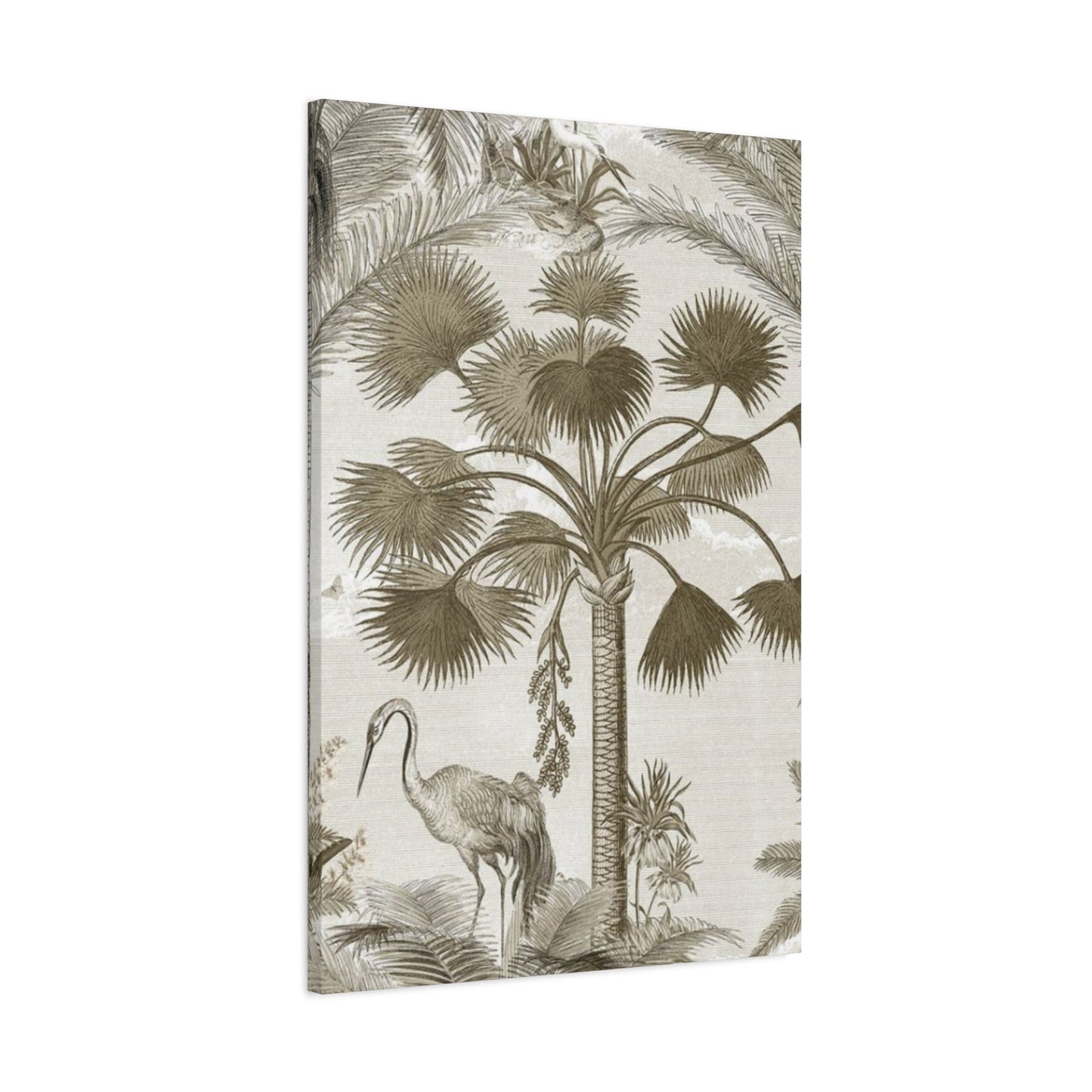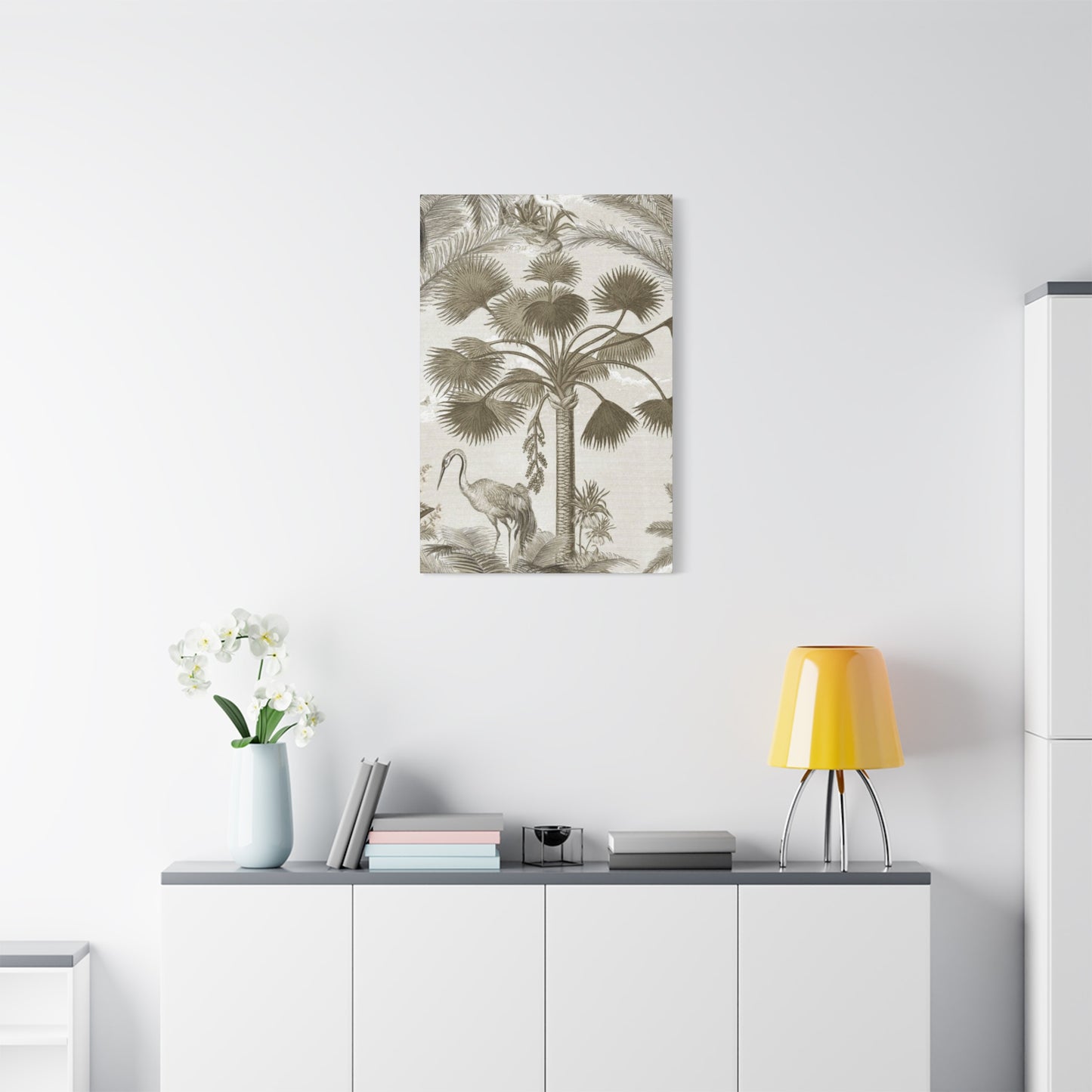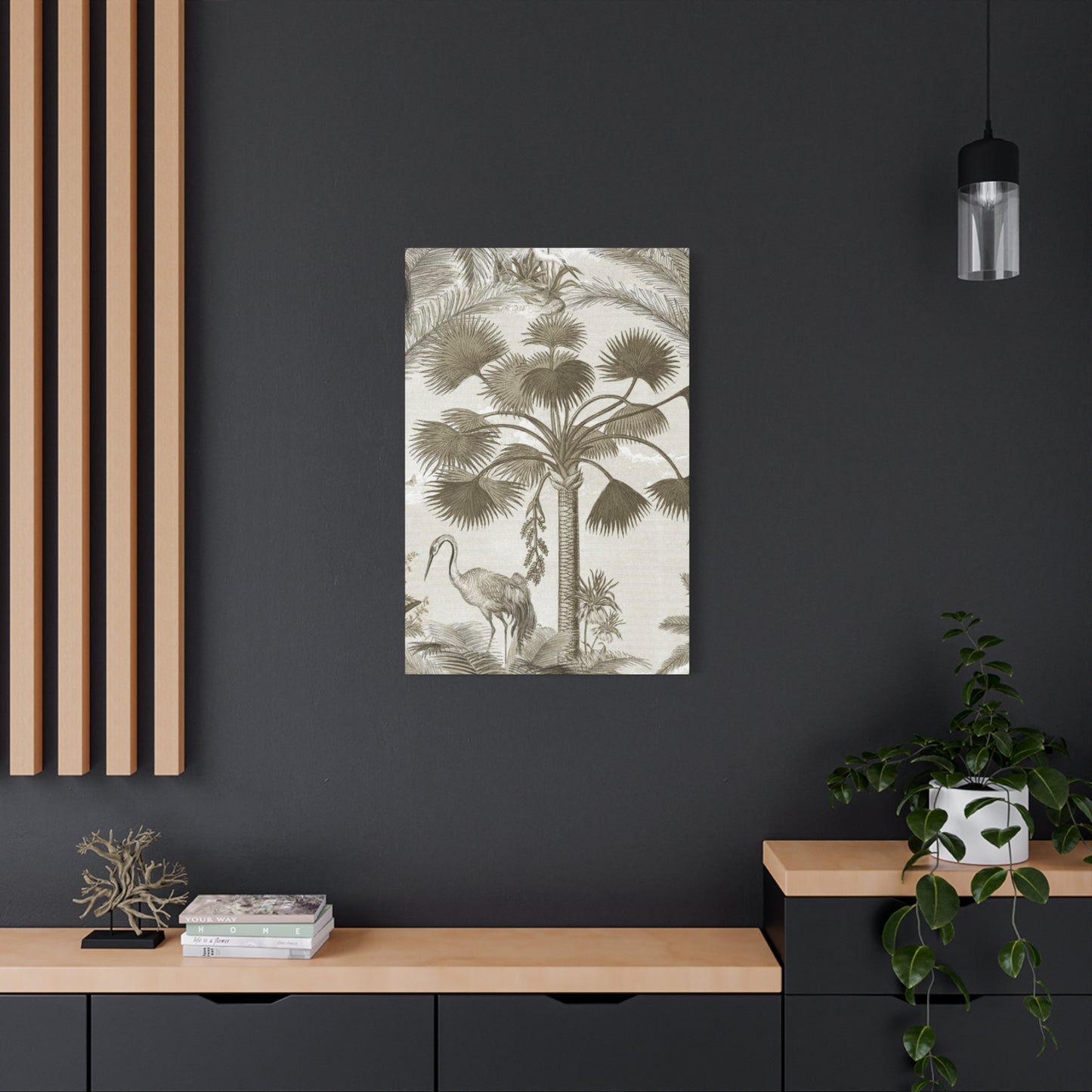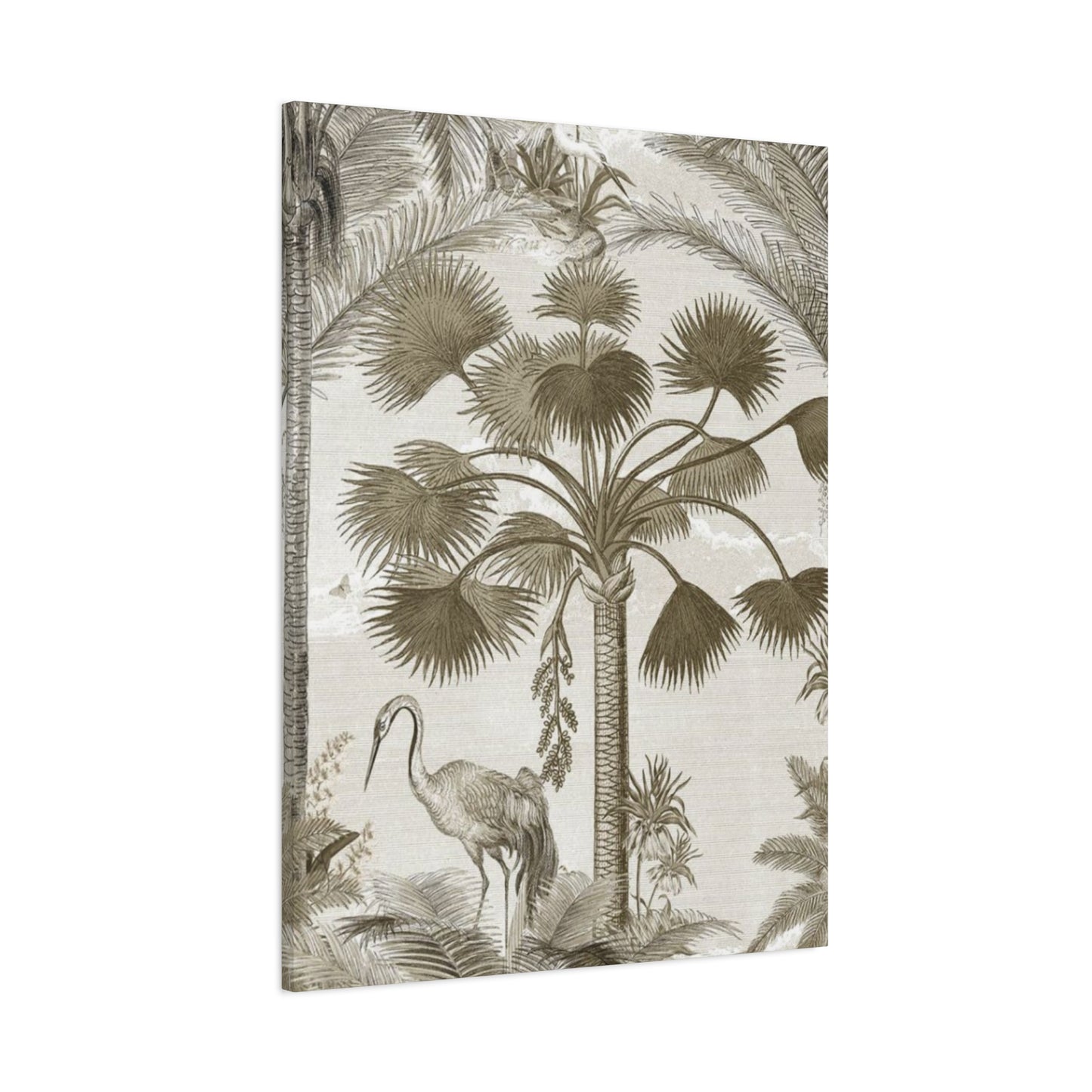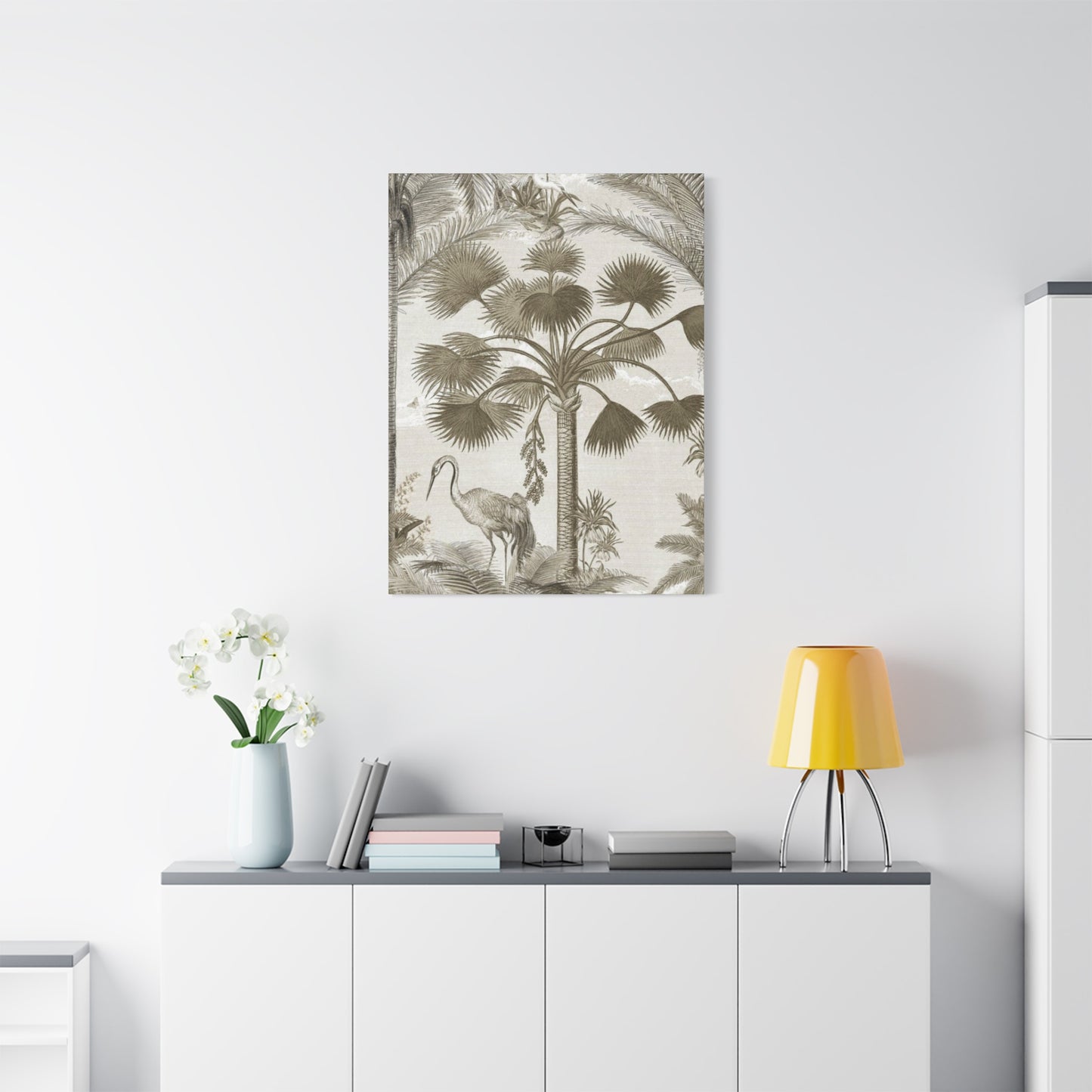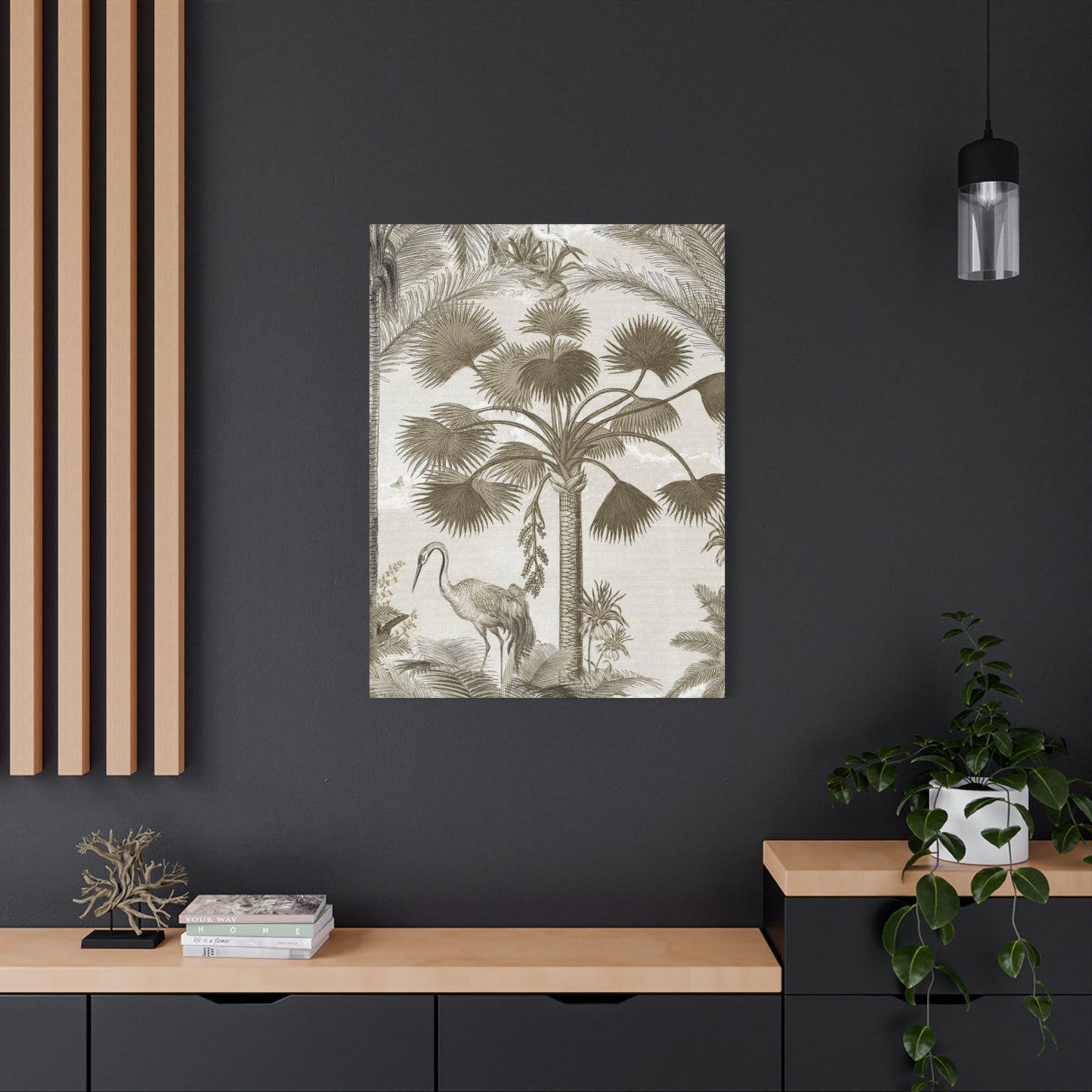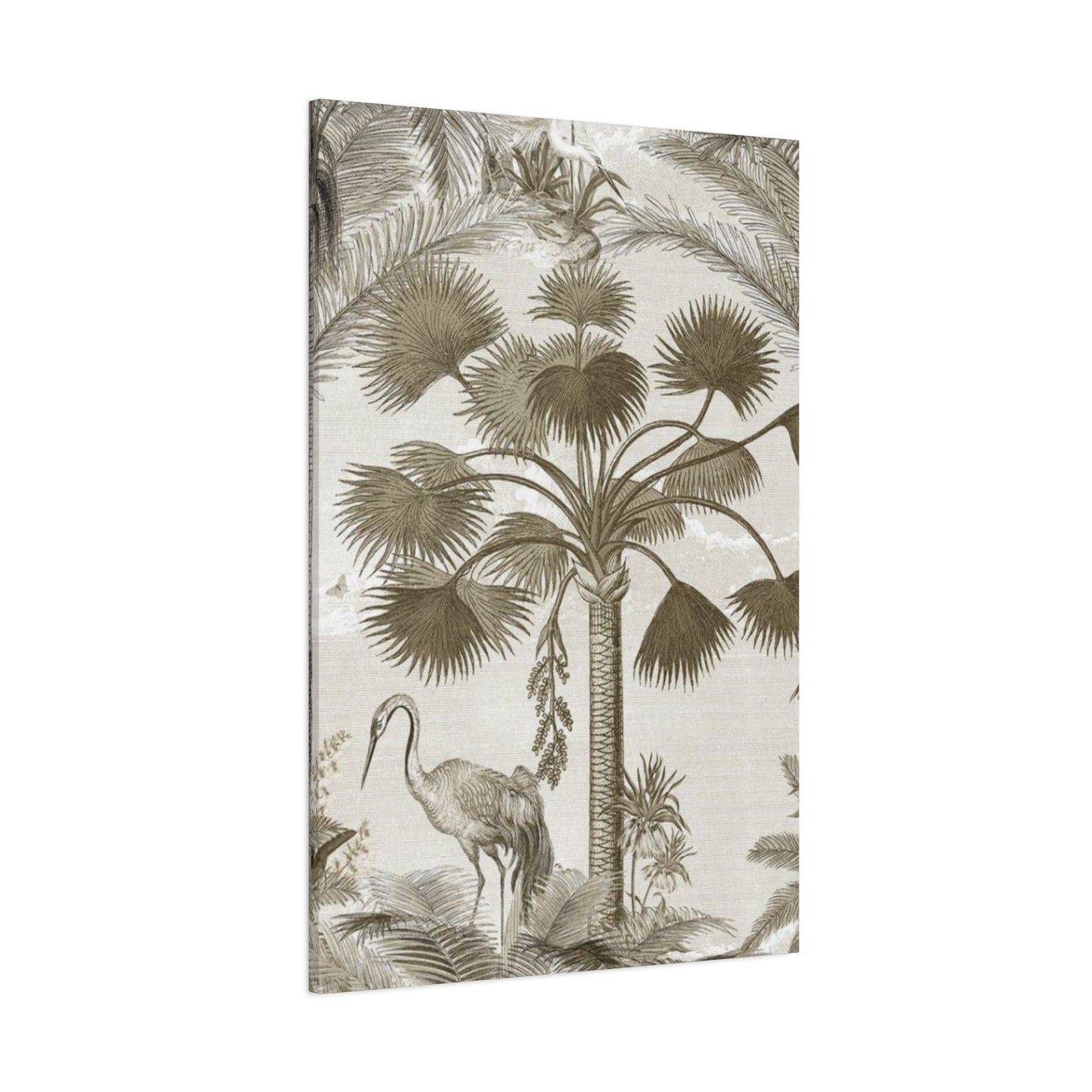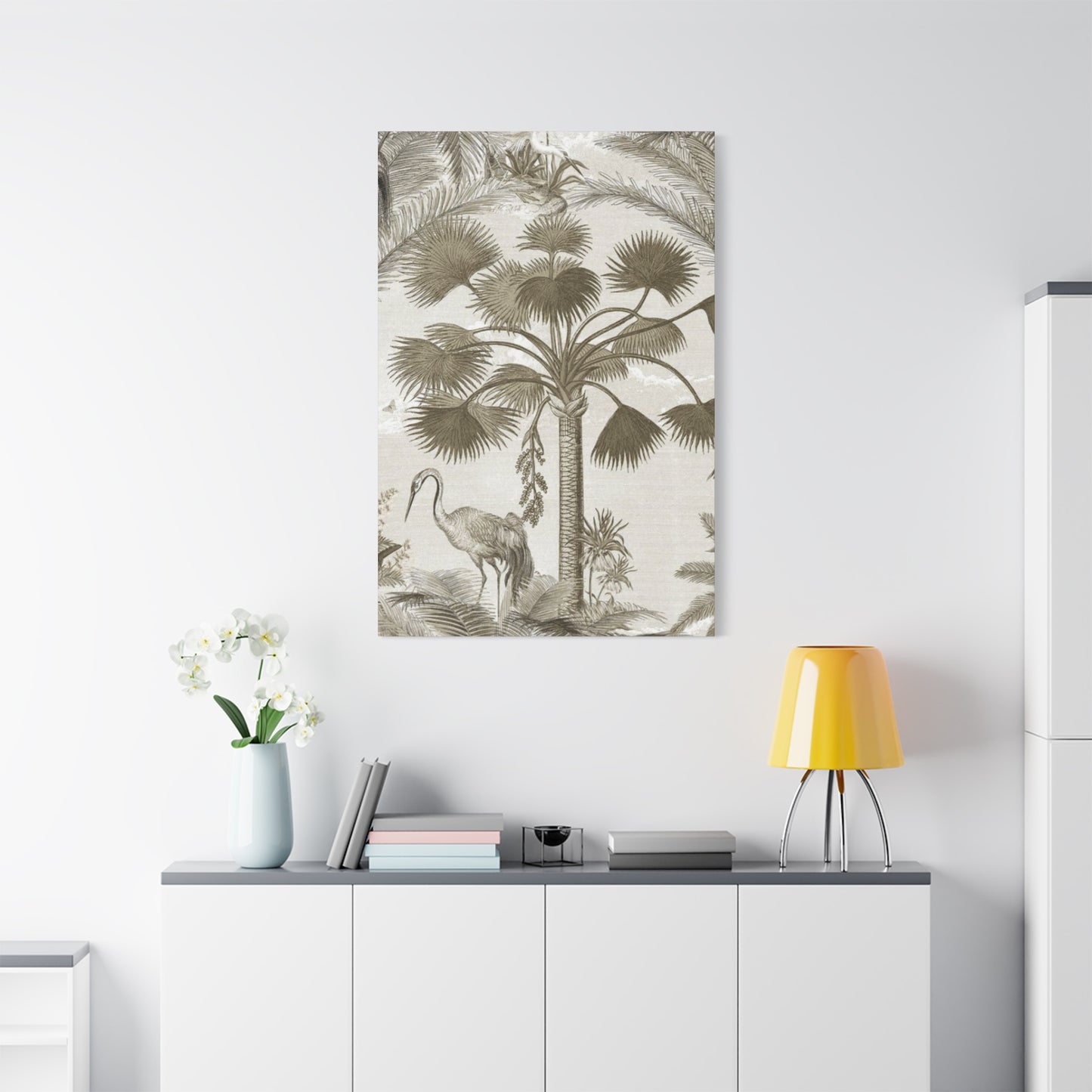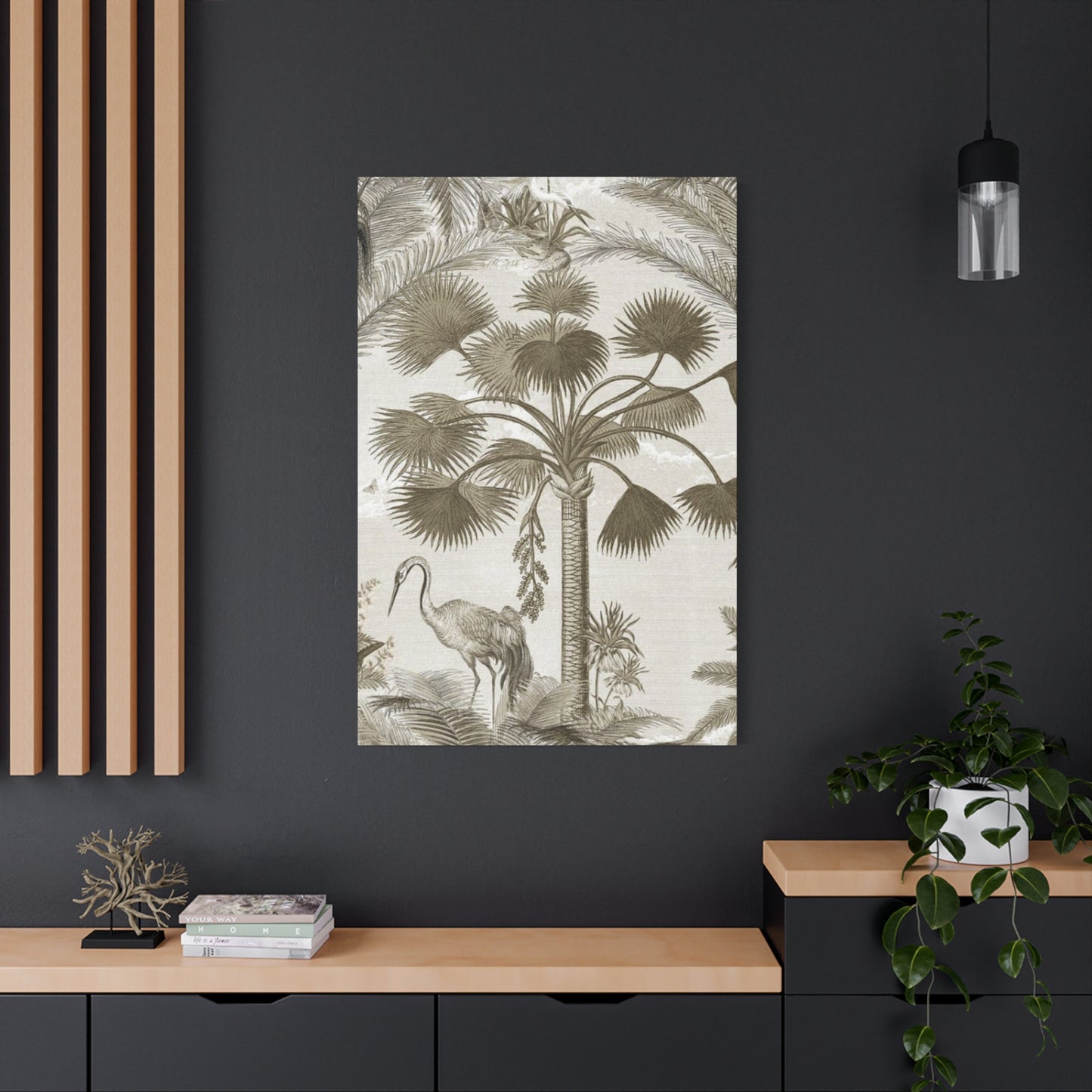Tropical Serenity: Exploring the Connection Between Palm Trees and Wildlife Wall Art
Bringing nature indoors has become increasingly popular among homeowners and interior design enthusiasts who seek to create tranquil, inviting environments. Among the various natural themes available, tropical vegetation combined with creatures creates a captivating aesthetic that transforms ordinary rooms into extraordinary spaces. This combination of botanical and fauna imagery offers a unique opportunity to celebrate the beauty of natural ecosystems while adding visual interest to any interior.
The appeal of these decorative pieces lies in their ability to evoke feelings of relaxation, adventure, and connection to the natural world. Whether featuring majestic birds perched among fronds, monkeys swinging through canopies, or exotic butterflies hovering near tropical foliage, these artistic representations bring the vibrancy of distant ecosystems into our daily living spaces. The versatility of this design theme makes it suitable for various rooms, from living areas to bedrooms, offices, and even outdoor patios.
Exploring Tropical Vegetation in Artistic Displays
Tropical vegetation has long captivated artists and designers with its graceful silhouettes and symbolic significance. These towering plants represent paradise, relaxation, and the allure of exotic destinations. Their distinctive shapes with spreading fronds create instantly recognizable imagery that adds a touch of coastal charm to any space. The architectural quality of these plants makes them ideal subjects for artistic interpretation, from realistic photography to abstract representations.
When incorporated into home decor, images of these tropical plants instantly establish a vacation-like atmosphere. The vertical lines of their trunks draw the eye upward, creating a sense of height and spaciousness in a room. Meanwhile, the feathery fronds add texture and movement to the composition. This combination of structural elements and organic forms creates visual interest that remains engaging over time.
Different species of these tropical plants offer varying aesthetic qualities. Some feature fan-shaped fronds that spread in dramatic patterns, while others display pinnate leaves that create feathery, cascading effects. Date varieties showcase dense crowns of arching fronds, while coconut types present a more relaxed, tropical appearance. Each variety brings its own character to artistic representations, allowing homeowners to select imagery that matches their preferred style.
The color palette associated with these plants typically includes various shades of green, from deep forest tones to bright lime hues. However, artistic interpretations often expand this palette to include sunset oranges, ocean blues, and sandy beiges that enhance the tropical theme. Black and white representations emphasize the structural beauty of these plants, creating sophisticated, contemporary looks that work well in modern interiors.
These tropical specimens also carry cultural and symbolic meanings that add depth to their decorative use. In many traditions, they represent victory, peace, and eternal life. Their ability to thrive in challenging coastal environments symbolizes resilience and adaptability. This symbolic richness makes them meaningful additions to living spaces, not just aesthetically pleasing ones.
Creatures That Inhabit Tropical Ecosystems
The creatures that make their homes among tropical vegetation represent some of nature's most fascinating biodiversity. These ecosystems support an incredible variety of species, from colorful birds and agile primates to insects, reptiles, and small mammals. Each creature plays a vital role in the ecosystem, contributing to pollination, seed dispersal, and the overall health of tropical environments.
Avian species are among the most visually striking inhabitants of these tropical habitats. Parrots with their brilliant plumage create stunning focal points in artistic compositions. Toucans with their oversized, colorful beaks add whimsical charm to decorative pieces. Herons and egrets bring elegance with their graceful forms and patient hunting poses. Hummingbirds contribute delicate beauty as they hover near flowers, their iridescent feathers catching light in spectacular ways.
Primates represent another charismatic group frequently featured in wildlife imagery. Monkeys swinging through canopies embody playfulness and agility, bringing dynamic energy to artistic compositions. Orangutans, with their contemplative expressions and gentle nature, create more thoughtful, emotional pieces. These intelligent creatures remind viewers of our connection to the natural world and the importance of conservation.
Insects, though smaller, contribute essential visual elements to tropical compositions. Butterflies in particular offer extraordinary color and pattern diversity. Morpho butterflies display brilliant blue wings that seem to glow. Monarchs showcase striking orange and black patterns. Swallowtails present elegant forms with distinctive tail extensions. These delicate creatures add movement and lightness to artistic arrangements.
Reptiles bring different qualities to wildlife imagery. Lizards basking on branches add warmth and tranquility to scenes. Geckos clinging to surfaces demonstrate remarkable adaptations to tropical life. Tree frogs with their vivid colors and large eyes create engaging focal points. These creatures remind viewers of the incredible diversity within tropical ecosystems.
Mammals beyond primates also inhabit these environments. Sloths moving slowly through branches embody the relaxed pace of tropical life. Bats performing essential pollination duties showcase the ecosystem's nocturnal dimension. Small rodents and marsupials demonstrate the variety of life forms these habitats support. Each contributes to the complex web of relationships that makes tropical ecosystems so vital.
Artistic Styles for Natural Imagery
The artistic approach chosen for depicting tropical vegetation and creatures significantly impacts the overall aesthetic effect. Photography captures realistic details and authentic moments, allowing viewers to appreciate the true beauty of natural subjects. High-quality photographic prints can showcase textures, colors, and behaviors with stunning clarity, creating powerful connections between viewers and distant ecosystems.
Painting allows for more interpretive approaches, where artists can emphasize certain elements, adjust colors for emotional effect, and create idealized compositions. Watercolor techniques produce soft, dreamy effects that enhance the romantic quality of tropical themes. Oil paintings can capture rich, saturated colors with dramatic contrasts. Acrylic works offer versatility, from bold, contemporary styles to subtle, naturalistic representations.
Illustration brings stylized charm to wildlife imagery. Contemporary illustrators create simplified forms with bold lines and flat colors that work well in modern interiors. Vintage botanical illustration styles reference historical natural history studies, adding educational and nostalgic dimensions. Digital illustrations can incorporate graphic elements, patterns, and typography to create unique, contemporary pieces.
Abstract interpretations focus on color, form, and emotion rather than realistic representation. These pieces capture the essence of tropical environments through suggestive shapes, vibrant color combinations, and dynamic compositions. Abstract works allow for greater flexibility in matching existing decor while still conveying the energy and atmosphere of tropical habitats.
Mixed media approaches combine different techniques and materials to create textured, layered effects. Artists might incorporate actual plant materials, metalwork, or three-dimensional elements to add physical depth to their compositions. These pieces become sculptural objects that engage viewers through multiple sensory dimensions.
Minimalist styles reduce tropical subjects to their essential forms, using simple lines and limited color palettes. These sophisticated approaches suit contemporary interiors where simplicity and elegance are priorities. Despite their reduced complexity, these pieces still evoke tropical atmospheres through careful selection of iconic shapes and suggestive details.
Material Options for Decorative Pieces
Canvas prints represent one of the most popular options for displaying tropical and wildlife imagery. The texture of canvas adds warmth and artistic quality to photographs and reproductions. Gallery-wrapped canvases, where the image continues around the edges, create frameless presentations that suit modern aesthetics. Traditional stretched canvases with frames offer more formal appearances suitable for classic interiors.
Paper prints provide versatility and affordability while still delivering high-quality results. Fine art papers with archival properties ensure longevity, preventing fading and deterioration over time. Different paper textures, from smooth to heavily textured, create varied visual effects. Matting and framing options for paper prints allow for extensive customization to match specific decor needs.
Metal prints offer contemporary, high-impact presentations of tropical and wildlife imagery. The printing process infuses dyes directly into specially coated aluminum, creating luminous, vibrant results with exceptional detail and color depth. Metal prints resist moisture and fading, making them ideal for challenging environments like bathrooms or outdoor covered areas. Their sleek, modern appearance suits contemporary and industrial design schemes.
Acrylic prints provide luxury presentations with stunning depth and clarity. Images printed behind clear acrylic panels appear to float, with extraordinary color saturation and sharpness. The reflective quality of acrylic adds dimension, making images appear more three-dimensional. These premium pieces make powerful statements in sophisticated interiors.
Wood prints bring rustic, organic qualities to tropical and wildlife imagery. Printing directly onto wood surfaces creates unique effects where the natural grain becomes part of the composition. These pieces particularly suit coastal, farmhouse, and bohemian design styles where natural materials are emphasized. The warmth of wood complements tropical themes while grounding them in earthy aesthetics.
Textile options including tapestries and fabric prints offer soft, tactile alternatives to rigid substrates. Woven tapestries create traditional, artisanal looks with rich texture and dimension. Fabric panels stretched over frames provide lighter-weight options that absorb sound, offering acoustic benefits in addition to visual appeal. These softer presentations create welcoming, comfortable atmospheres.
Color Schemes for Tropical Designs
Natural green palettes form the foundation of many tropical design schemes. Various shades from deep emerald to bright lime create lush, immersive effects that bring the outdoors inside. Layering different green tones adds depth and prevents monotony, while incorporating blue-greens suggests coastal locations. These verdant schemes create refreshing, rejuvenating environments that promote relaxation.
Sunset-inspired palettes capture the drama of tropical evenings with combinations of orange, pink, coral, and gold. These warm schemes create energetic, optimistic atmospheres ideal for social spaces. The gradual transitions from yellow to deep orange to purple that characterize tropical sunsets provide natural color progressions that feel cohesive and intentional.
Ocean-focused schemes emphasize blues and teals reminiscent of tropical waters. From pale sky blue to deep navy, these cooling colors create calming environments perfect for bedrooms and meditation spaces. Adding turquoise and aqua introduces the specific hue of tropical shallows, enhancing the beachy, vacation-like quality of the space.
Neutral palettes focusing on sand, beige, and cream tones allow tropical subjects to shine without competing colors. These understated schemes work well in minimalist interiors where simplicity is valued. The warmth of neutral tones complements natural materials like wood and stone, creating cohesive, organic-feeling spaces.
Vibrant, high-contrast schemes featuring bold combinations of complementary colors create dynamic, attention-grabbing effects. Pairing orange with blue, purple with yellow, or red with green generates visual excitement suitable for creative spaces or areas intended to energize occupants. These bold approaches reflect the intense colors found in tropical flowers, birds, and sunsets.
Monochromatic schemes using single colors in various shades create sophisticated, gallery-like presentations. Black and white treatments emphasize form, texture, and composition while maintaining timeless elegance. Sepia or warm-toned monochrome schemes add vintage character, referencing historical exploration and natural history documentation.
Sizing Considerations for Visual Impact
Large-scale pieces create immediate focal points that command attention and set the tone for entire rooms. Oversized single images work particularly well above sofas, beds, or in dining areas where they provide substantial visual weight. These statement pieces should be proportional to the furniture and wall space, typically occupying two-thirds to three-quarters of the available width for balanced composition.
Medium-sized pieces offer versatility, working as standalone features or as components in gallery arrangements. These dimensions suit most residential spaces without overwhelming smaller rooms. Multiple medium pieces can create rhythm and flow as viewers move through connected spaces, establishing visual continuity while allowing for variety in specific imagery.
Small pieces provide opportunities for intimate vignettes and detailed viewing experiences. Collections of smaller works can create interesting compositions when arranged thoughtfully. These dimensions work well in narrow spaces like hallways, on shelves, or in bathroom settings where large pieces would feel disproportionate.
Multi-panel arrangements, where single images span multiple canvases, create contemporary, dynamic presentations. Triptychs and larger panel arrangements allow for panoramic compositions that emphasize the expansive nature of tropical landscapes. The spacing between panels adds visual interest and modern flair to traditional tropical imagery.
Vertical orientations emphasize the height of tropical vegetation, drawing eyes upward and creating impressions of spaciousness. These formats particularly suit narrow wall spaces, areas flanking windows, or spots where vertical emphasis benefits the overall room proportions.
Horizontal orientations create more relaxed, expansive feelings appropriate for serene, restful spaces. These formats work well above furniture pieces and in rooms with lower ceilings where emphasizing width over height benefits the spatial perception.
Placement Strategies for Maximum Effect
Living room placement typically focuses on creating conversation-worthy focal points above seating arrangements. Large pieces centered over sofas establish clear visual anchors, while flanking pieces on adjacent walls create gallery-like arrangements that encourage circulation and engagement with the art. Corner groupings can enliven underutilized spaces, adding interest to areas that might otherwise feel empty.
Bedroom placement should prioritize calming, restful imagery that promotes relaxation. Large pieces centered above headboards create hotel-like luxury and establish the room's aesthetic direction. Side wall arrangements allow for viewing from the bed, providing visual interest without dominating the sleeping space. Opposite-wall placement gives occupants something peaceful to contemplate as they prepare for sleep.
Dining area installations can create sophisticated entertaining environments. Large-scale pieces add drama and conversation topics during meals. Series or collections that explore related themes provide sustained visual interest during longer dining experiences. The vertical emphasis of tropical vegetation works particularly well in dining spaces, complementing the vertical nature of standing guests and table settings.
Bathroom applications transform purely functional spaces into spa-like retreats. Moisture-resistant materials like metal or protected canvas ensure longevity in humid environments. Tropical and wildlife imagery naturally suits bathroom settings, reinforcing themes of cleansing, renewal, and natural beauty. Smaller pieces prevent overwhelming limited wall space while still providing visual interest.
Home office installations can create inspiring, productive environments. Natural imagery has been shown to reduce stress and improve focus, making tropical and wildlife pieces particularly appropriate for work spaces. Positioning pieces within the line of sight during breaks from computer screens provides restful focal points that help prevent eye strain and mental fatigue.
Entryway placement creates important first impressions for guests. Bold, welcoming tropical imagery immediately establishes the home's aesthetic character. These high-traffic areas benefit from durable materials and protective framing that withstand environmental fluctuations from opening exterior doors.
Framing and Presentation Techniques
Traditional wooden frames add warmth and classic elegance to tropical and wildlife imagery. Natural wood tones complement the organic subjects, creating cohesive presentations that feel grounded and timeless. Painted frames in white, black, or metallic finishes allow for matching existing decor while providing clean, finished edges that define the artwork.
Floating frames create contemporary presentations where artwork appears to hover within the frame, separated by a small gap. This technique adds depth and dimension while maintaining modern aesthetics. The shadow created by the float effect draws attention to the artwork while adding subtle visual interest.
Gallery-style presentations without frames create seamless, modern looks particularly suited to canvas prints. The absence of frames allows the artwork itself to remain the sole focus, preventing any distraction from framing elements. This approach works well in contemporary, minimalist, and industrial design schemes where simplicity is prioritized.
Matting provides breathing room between artwork and frame, preventing the piece from feeling crowded or constrained. Multiple mat layers in complementary colors can add sophistication and coordinate with room colors. Conservation-quality matting prevents deterioration by keeping the artwork from direct contact with glass or acrylic.
Shadow boxes add three-dimensional depth, allowing for incorporation of physical objects alongside printed images. Preserved plant specimens, shells, or small sculptures can accompany tropical and wildlife prints, creating personalized, meaningful displays that tell broader stories about connection to nature.
Plexiglass and acrylic glazing provide clarity and protection without the weight and fragility of traditional glass. UV-protective options prevent fading from sunlight exposure, ensuring long-term color retention. Anti-reflective coatings minimize glare, allowing for placement in various lighting conditions without visual interference.
Lighting Techniques to Enhance Displays
Natural lighting creates dynamic presentations that change throughout the day as sunlight shifts across walls. Positioning artwork to receive indirect natural light prevents fading while allowing for appreciation of colors and details. Morning light creates cool, fresh atmospheres, while afternoon light adds warmth and richness to tropical imagery.
Picture lights mounted directly above or below artwork provide focused illumination that highlights specific pieces. LED picture lights offer energy efficiency with minimal heat output, preventing potential damage to artwork. Adjustable picture lights allow for customization of the illuminated area and intensity.
Track lighting systems provide flexibility for illuminating multiple pieces or adjusting focus as artwork changes. These systems work particularly well in gallery-style arrangements where several pieces share wall space. Directional heads can be aimed precisely to prevent spillover light that might create glare or uneven illumination.
Recessed spotlights create clean, architectural presentations without visible fixtures. These installations require planning during construction or renovation but provide sophisticated, permanent lighting solutions. Adjustable recessed fixtures offer some flexibility for repositioning light without changing the physical installation.
Ambient room lighting affects how artwork appears even when not directly illuminated. Warm white lighting enhances the golden, sunset qualities in tropical imagery, while cool white lighting emphasizes blues and greens. Dimmable lighting allows for adjusting the overall brightness to suit different times of day and activities.
Accent lighting using table or floor lamps can provide subtle uplighting or side-lighting that creates dramatic shadows and highlights texture. This approach works particularly well with three-dimensional pieces like metal sculptures or heavily textured paintings where the interplay of light and shadow adds significant visual interest.
Creating Gallery Arrangements
Symmetrical arrangements create formal, balanced presentations suitable for traditional interiors. Identical frames in grid patterns provide order and predictability, while varied imagery within the frames maintains visual interest. Perfect symmetry conveys intentionality and careful curation, reflecting thoughtful design decisions.
Asymmetrical arrangements feel more casual and dynamic, creating movement and energy on walls. These organic groupings require careful attention to visual weight and balance, with larger pieces anchoring the composition while smaller pieces create rhythm and flow. The informal nature of asymmetric arrangements suits contemporary and eclectic design styles.
Salon-style hangings feature dense collections of various sizes, frames, and styles covering entire walls from floor to ceiling. This maximalist approach creates dramatic visual impact and allows for extensive collections to be displayed simultaneously. Careful planning prevents overwhelming viewers, with intentional spacing and thoughtful placement guiding the eye through the collection.
Linear arrangements place multiple pieces in horizontal or vertical rows, creating clean, organized presentations. These arrangements work well in hallways, above long furniture pieces, or in spaces with architectural features that suggest linear organization. Consistent spacing between pieces creates rhythm and unity.
Stair-step arrangements follow diagonal lines, creating dynamic movement that draws the eye upward or across walls. These compositions add energy and interest while working well with architectural features like staircases. The progression from smaller to larger pieces or vice versa creates intentional visual flow.
Central focal point arrangements position one large, significant piece as the anchor, with smaller surrounding pieces supporting and enhancing the main work. This approach provides clear hierarchy and prevents confusion about which piece should receive primary attention. Supporting pieces should complement without competing with the focal point.
Coordinating with Existing Interior Design
Coastal design schemes naturally accommodate tropical vegetation and wildlife imagery, creating cohesive environments that celebrate beach and ocean themes. Light, airy color palettes with blues, whites, and sandy neutrals provide perfect backdrops for tropical subjects. Natural textures like rope, rattan, and weathered wood complement the organic nature of the artwork.
Bohemian interiors embrace the eclectic nature of combined tropical and wildlife themes. Layered textiles, mixed patterns, and globally-inspired accessories create rich, collected-over-time aesthetics where diverse artwork feels intentional rather than random. The relaxed, unconventional nature of bohemian design allows for bold color choices and unexpected combinations.
Contemporary minimalist spaces benefit from carefully selected tropical and wildlife pieces that serve as singular focal points in otherwise sparse environments. Clean lines, neutral palettes, and uncluttered surfaces allow artwork to command full attention without competing elements. The simplicity of minimalist design emphasizes quality over quantity in art selection.
Traditional interiors incorporate tropical themes through more formal presentations with classic framing and symmetrical arrangements. Rich wood tones, elegant fabrics, and refined accessories create sophisticated contexts for wildlife and botanical artwork. Historical illustration styles or sepia-toned photography can bridge tropical subjects with traditional aesthetics.
Industrial design schemes create interesting contrasts when paired with organic tropical imagery. Exposed brick, metal fixtures, and concrete surfaces benefit from the softening effect of natural subjects. The juxtaposition between hard, man-made materials and soft, organic imagery creates dynamic tension that engages viewers.
Farmhouse styles blend tropical themes through emphasis on natural materials and rustic presentations. Wood-based prints, distressed frames, and simple compositions align with farmhouse values of authenticity and connection to nature. Limiting color palettes to neutrals with single accent colors prevents tropical themes from conflicting with farmhouse aesthetics.
Seasonal and Temporary Displays
Rotating artwork seasonally prevents visual fatigue and allows for expression of different moods throughout the year. Summer displays might emphasize bright, vibrant tropical imagery, while winter displays could feature more subdued, contemplative nature scenes. This practice keeps interiors feeling fresh and responsive to changing seasons.
Temporary installations using removable hanging systems allow for frequent changes without wall damage. Command strips, picture rails, and clip systems provide flexibility for renters and those who enjoy regularly refreshing their spaces. This approach encourages experimentation with different arrangements and styles.
Holiday-specific displays can incorporate tropical themes in unexpected ways. Tropical Christmas decorations featuring birds in holiday colors or beaches with seasonal elements create unique, memorable celebrations. These non-traditional approaches appeal to those seeking alternatives to conventional holiday aesthetics.
Event-focused displays create appropriate atmospheres for specific gatherings. Dinner parties might warrant more dramatic, conversation-starting pieces, while intimate gatherings could benefit from subtler, more contemplative works. The ability to adjust artwork to suit occasions adds flexibility to entertaining spaces.
Thematic rotations allow for exploring different aspects of tropical and wildlife subjects. One period might focus on avian species, another on botanical elements, and another on mammalian subjects. This approach prevents thematic fatigue while maintaining overall consistency in aesthetic direction.
Temporary outdoor displays extend living spaces during favorable weather. Weather-resistant materials allow for safe outdoor display of tropical and wildlife imagery on covered patios, screened porches, or under protective overhangs. These installations create cohesive indoor-outdoor environments perfect for entertaining.
Educational Aspects of Wildlife Imagery
Conservation awareness develops naturally when wildlife imagery prompts questions and conversations about the species depicted. Learning about habitat requirements, population status, and threats facing species creates emotional investment in their protection. Artwork becomes a gateway to understanding broader environmental issues.
Species identification skills develop through regular exposure to accurate wildlife representations. Children particularly benefit from learning to recognize different species, understand their characteristics, and appreciate their unique qualities. This familiarity builds scientific literacy and observation skills.
Ecosystem understanding grows as viewers consider the relationships between species and their environments. Artwork depicting tropical vegetation with its animal inhabitants illustrates interdependence and the complexity of natural systems. This holistic perspective promotes environmental awareness and responsible decision-making.
Geographic awareness expands as tropical imagery prompts interest in where these species and habitats exist. Learning about different tropical regions, their climates, and their unique biodiversity provides cultural and scientific education. This global perspective broadens understanding of Earth's diversity.
Behavioral insights emerge from artwork capturing specific moments in animal lives. Images of feeding, nesting, playing, or hunting behaviors reveal the intelligence and complexity of wildlife. These glimpses into animal lives foster empathy and appreciation for non-human consciousness.
Conservation challenges become more tangible through exposure to species facing threats. Understanding habitat loss, climate change, and human impacts creates motivation for supporting conservation efforts. Artwork serves as visual reminders of what we stand to lose without active protection measures.
Sustainability in Art Selection
Eco-friendly printing processes minimize environmental impacts associated with art production. Water-based inks, solvent-free processes, and sustainable energy usage reduce the carbon footprint of creating decorative pieces. Supporting companies prioritizing sustainability aligns purchasing decisions with environmental values.
Recycled and sustainable materials for substrates and frames reduce demand for virgin resources. Reclaimed wood, recycled metal, and sustainable paper sources provide environmentally responsible options without compromising quality. These choices demonstrate that aesthetic appeal and environmental responsibility can coexist.
Local artist support reduces transportation impacts while strengthening creative communities. Purchasing directly from artists ensures fair compensation and reduces the markup associated with multiple intermediaries. Local art often reflects regional ecosystems, creating authentic connections to nearby natural areas.
Conservation organization partnerships connect art purchases with direct conservation action. Some companies donate portions of proceeds to wildlife protection efforts, making each purchase a contribution to habitat preservation. These arrangements create tangible links between home decor and environmental stewardship.
Durable, long-lasting pieces prevent the waste associated with disposable decor trends. Investing in quality artwork that remains appealing over time reduces consumption and the environmental costs of frequent replacement. Timeless tropical and wildlife themes maintain relevance across changing design trends.
Second-hand and vintage options offer sustainable alternatives to new production. Antique natural history prints, vintage photography, and previously owned pieces provide unique character while eliminating production impacts. These choices add historical depth while supporting circular economy principles.
Psychological Benefits of Nature Imagery
Stress reduction occurs through exposure to natural imagery, with studies showing measurable decreases in cortisol levels and heart rate. The calming effect of natural scenes provides respite from urban environments and technology-saturated lifestyles. Even representations of nature offer these benefits, making artwork a tool for psychological wellbeing.
Mood enhancement results from engaging with appealing natural subjects. The vibrant colors and dynamic compositions typical of tropical and wildlife imagery stimulate positive emotional responses. Regular exposure to these uplifting visuals contributes to overall life satisfaction and emotional resilience.
Attention restoration happens when fatigued cognitive resources recover through engagement with nature imagery. The effortless attention required for viewing natural scenes differs from the directed attention demanded by work tasks. This mental rest improves subsequent performance and decision-making abilities.
Creativity stimulation occurs as natural imagery inspires new ideas and perspectives. The diversity and complexity of tropical ecosystems provide endless variations that engage imagination and prompt novel thinking. Creative professionals particularly benefit from regular exposure to inspiring natural subjects.
Connection to nature strengthens through regular visual engagement with wildlife and natural environments. This connection, termed biophilia, represents an innate human affinity for living systems. Satisfying this need through artwork improves wellbeing, especially for urban dwellers with limited outdoor access.
Perspective maintenance results from contemplating the vastness and complexity of natural systems. Wildlife imagery reminds viewers of realities beyond human concerns, providing helpful context during stressful periods. This broader perspective supports mental health and emotional balance.
Caring for Artwork
Dust prevention and removal maintain appearance and prevent buildup that can damage surfaces over time. Regular gentle dusting with microfiber cloths keeps pieces looking fresh. Avoiding feather dusters prevents scratching, while ensuring dust doesn't become embedded in textures.
Sunlight protection prevents fading and deterioration of colors and materials. UV-filtering glass or acrylic provides protection for framed pieces, while strategic placement away from direct sunlight benefits all artwork types. Window treatments offer additional control over light exposure.
Humidity control prevents warping, mold growth, and material degradation. Maintaining consistent humidity levels between 40 and 60 percent protects paper, canvas, and wooden components. Dehumidifiers in damp climates and humidifiers in dry climates help maintain optimal conditions.
Temperature stability prevents expansion and contraction that can damage frames, canvases, and adhesives. Avoiding placement near heating vents, fireplaces, or air conditioning units protects artwork from temperature fluctuations. Consistent temperatures between 65 and 75 degrees Fahrenheit provide ideal conditions.
Cleaning techniques vary by material and require appropriate products and methods. Canvas and paper pieces should never be cleaned with water or household cleaners. Metal and acrylic surfaces can tolerate gentle cleaning with appropriate solutions. Always consulting care instructions prevents accidental damage.
Professional conservation becomes necessary for valuable or damaged pieces requiring expert intervention. Conservators can repair tears, address fading, stabilize materials, and perform other specialized treatments. Regular professional assessment identifies developing problems before they become severe.
Budgeting for Quality Pieces
Entry-level options provide affordable introductions to tropical and wildlife decor. Poster prints with simple frames offer budget-friendly ways to experiment with different styles and subjects. These accessible options allow for risk-free exploration before committing to more substantial investments.
Mid-range selections balance quality and affordability, offering better materials and craftsmanship without luxury pricing. Canvas prints with gallery wrapping or quality framing provide durability and professional appearance at moderate cost. These pieces suit most residential applications and provide good value.
Investment pieces represent significant commitments to quality, uniqueness, and lasting value. Original artwork, limited edition prints, and premium materials justify higher prices through superior appearance and potential appreciation. These selections become meaningful parts of homes with special significance beyond mere decoration.
Gradual collection building allows for acquiring multiple pieces over time without overwhelming budgets. Starting with key focal point pieces and adding complementary works creates cohesive arrangements through intentional, patient curation. This approach prevents hasty decisions and allows for thoughtful selection.
Sales and promotions provide opportunities for acquiring desired pieces at reduced costs. Many retailers offer seasonal sales, clearance events, and promotional codes. Patience in waiting for these opportunities can result in significant savings without compromising on preferred styles or subjects.
Commission opportunities allow for custom pieces tailored to specific requirements. Working directly with artists to create unique works ensures perfect matches with existing decor while supporting creative professionals. While potentially costly, commissioned pieces offer unmatched personalization.
Incorporating Three-Dimensional Elements
Sculptural pieces add physical depth and tactile interest beyond flat prints and paintings. Metal sculptures of birds, carved wooden pieces, or ceramic representations create focal points that engage viewers from multiple angles. These dimensional works cast shadows that change with lighting, adding dynamic qualities to static installations.
Layered shadow boxes combine printed imagery with dimensional elements like preserved specimens, natural objects, or crafted components. These assemblages create depth through physical spacing between layers. The interplay between two and three dimensions adds complexity and visual interest.
Textile wall hangings including tapestries and fabric art provide soft, textured alternatives to rigid presentations. The dimensional quality of woven or stitched textiles adds warmth and acoustic benefits. These pieces particularly suit bohemian and traditional design schemes where textile arts are valued.
Shelving arrangements allow for rotating displays of three-dimensional objects alongside flat artwork. Carved birds, decorative eggs, or natural specimens create cohesive nature-themed vignettes. The ability to rearrange these objects provides ongoing opportunities for refreshing displays.
Mounted specimens, when ethically sourced from conservation programs or natural deaths, create powerful educational displays. Butterfly specimens in shadow boxes, feathers from molted birds, or ethically collected shells connect viewers with physical reality beyond representations. Proper sourcing ensures these displays support rather than harm conservation.
Hanging mobiles introduce movement to wildlife displays, creating dynamic presentations that respond to air currents. Bird or butterfly mobiles add whimsy and interest to spaces like nurseries or reading corners. The gentle motion creates calming effects while maintaining visual engagement.
Digital and Interactive Options
Digital frames allow for rotating collections of tropical and wildlife imagery without physical space requirements. High-resolution displays show thousands of images in rotation, providing endless variety. These technological solutions suit those who appreciate frequent change and extensive collections.
Augmented reality applications enable virtual placement of artwork before purchase, reducing uncertainty about size, color, and placement. These tools help visualize how specific pieces will appear in actual spaces, improving decision-making and reducing return rates.
Interactive displays with motion sensors or touch capabilities create engaging experiences, particularly appealing for educational settings or children's spaces. These installations respond to viewer presence or interaction, creating memorable experiences that combine art and technology.
Projection systems can transform entire walls into changing displays of tropical and wildlife imagery. Though requiring specialized equipment and appropriate surfaces, these installations create immersive environments for special occasions or dedicated media rooms.
Smart lighting systems synchronize with artwork, adjusting color temperature and intensity to optimize viewing conditions throughout the day. These automated solutions ensure artwork always appears its best while reducing manual adjustments.
Virtual galleries online allow for exploring extensive collections before purchasing, providing convenient access to works from multiple artists and sources. High-quality photography and detailed descriptions help inform decisions without requiring physical gallery visits.
Cultural Perspectives on Nature Imagery
Indigenous artistic traditions often incorporate deep spiritual connections with natural subjects. These cultural perspectives add layers of meaning beyond aesthetic appeal, representing relationships between communities and their environments developed over generations. Respecting and learning from these traditions enriches understanding of nature imagery.
Regional variations in tropical and wildlife art reflect local ecosystems and cultural values. Caribbean art emphasizes bright colors and celebratory attitudes toward nature, while Southeast Asian traditions might incorporate religious symbolism and traditional artistic techniques. Understanding these regional differences provides cultural education alongside aesthetic appreciation.
Historical natural history illustration represents scientific documentation combined with artistic skill. These historical pieces reference periods of exploration and discovery, adding educational and nostalgic dimensions. The meticulous detail and careful observation in historical illustration demonstrates enduring commitment to understanding natural world.
Contemporary conservation messaging often appears in wildlife art, with artists using their work to raise awareness about environmental issues. These pieces combine aesthetic appeal with activist intent, challenging viewers to consider their relationship with nature and role in its protection.
Symbolic meanings vary across cultures, with specific animals and plants carrying different significance in different traditions. Awareness of these cultural associations prevents appropriation and promotes respectful incorporation of nature imagery. Learning these meanings adds depth to appreciation of artwork.
Biophilic design principles recognize innate human connections to nature and intentionally incorporate natural elements into built environments. This evidence-based approach validates decorating with nature imagery as supporting psychological and physical health rather than merely following aesthetic trends.
Children's Spaces and Educational Displays
Age-appropriate imagery introduces young viewers to wildlife and natural environments in engaging ways. Colorful, friendly representations of animals spark curiosity without causing fear. These early exposures shape attitudes toward nature and can inspire lifelong interest in environmental stewardship.
Educational labeling adds informative dimensions to decorative pieces, teaching children species names, habitats, and interesting facts. These labels transform artwork into learning tools that support school curricula and general knowledge development. Regular engagement with these educational displays reinforces information retention.
Interactive elements like removable pieces, questions to answer, or facts to discover make children's wildlife displays more engaging. These active learning opportunities maintain interest better than purely passive viewing. The hands-on nature supports different learning styles and keeps displays feeling fresh.
Growth charts incorporating tropical and wildlife themes combine functionality with decorative appeal. These beloved childhood items become treasured memories while serving practical purposes. The natural growth associations with plants and animals create meaningful thematic connections.
Themed rooms create immersive environments that transport children to tropical forests or wildlife habitats. Coordinated bedding, accessories, and artwork build cohesive designs that stimulate imagination and support creative play. These environments become settings for adventure and learning.
Safety considerations ensure age-appropriate installations that prevent injuries. Securely mounted pieces, rounded corners, and break-resistant materials protect curious children. As children grow, updating installations to match developmental stages maintains safety and relevance.
Conclusion
At its heart, palm tree and wildlife wall art captures the harmony between nature’s calm elegance and the untamed beauty of life within tropical landscapes. The blend of lush greenery, golden sunsets, and diverse animal life evokes a sense of serenity that reaches far beyond mere aesthetics. When you bring these tropical scenes into your home, you’re not just decorating a wall—you’re curating a sanctuary where warmth, vitality, and peace coexist.
Palm trees, long celebrated as universal symbols of tranquility, growth, and renewal, offer visual balance to any environment. Their upward reach mirrors our own desire for peace and expansion, while their swaying leaves conjure feelings of escape and gentle movement. When paired with depictions of tropical birds, sea turtles, or exotic wildlife, palm tree art creates a narrative of coexistence—a visual reminder of the delicate ecosystems that thrive beneath their shade. This connection between flora and fauna gives wildlife wall art a deeper resonance, inviting viewers to reflect on the interdependence that defines natural beauty.
Integrating tropical wall art into interior design offers both aesthetic and emotional rewards. The soothing color palette—soft greens, ocean blues, sandy neutrals, and warm golds—helps establish a balanced and refreshing atmosphere. In living rooms, palm-themed canvases can act as calming focal points, while wildlife pieces featuring flamingos, parrots, or dolphins add vibrancy and life to the space. Bedrooms benefit from more subdued tropical tones that foster relaxation, while workspaces come alive with art that sparks creativity and focus. In every case, tropical wall art encourages an effortless flow between calm and inspiration.
Beyond interior beauty, these artworks hold symbolic and ecological meaning. Palm trees represent resilience—they thrive under sun and wind, adapting gracefully to changing environments. Wildlife art, meanwhile, reminds us of the importance of protecting the natural world. Together, they form a visual symphony of balance and endurance, urging us to live in greater harmony with nature. Many modern artists are embracing this message, creating eco-conscious prints and sustainable wall décor that honor tropical biodiversity while supporting conservation efforts.
From a design perspective, palm and wildlife art complements nearly every décor style—from bohemian and coastal to modern minimalist and luxury tropical. Framed photographic prints capture realism, while watercolor and digital interpretations bring artistic fluidity. Grouping different sizes and textures—like canvas, metal, or reclaimed wood—adds dimension and storytelling to your walls. No matter the format, tropical wall art infuses interiors with the light, air, and optimism of paradise.
Ultimately, Tropical Serenity wall art serves as a bridge between art, nature, and emotion. It invites you to slow down, breathe deeply, and experience the tranquility of the tropics from within your own home. Every brushstroke and image captures the rhythm of life—the call of birds, the rustle of leaves, the whisper of the sea breeze. By incorporating palm tree and wildlife art into your space, you nurture an environment of mindfulness, joy, and connection.
In essence, this art form does more than beautify—it heals and inspires. It reminds us that serenity is not found in distant destinations alone but can flourish wherever we choose to honor the natural world. Through tropical and wildlife wall art, your home becomes a living reflection of balance, vitality, and peace—the true essence of tropical serenity.

















